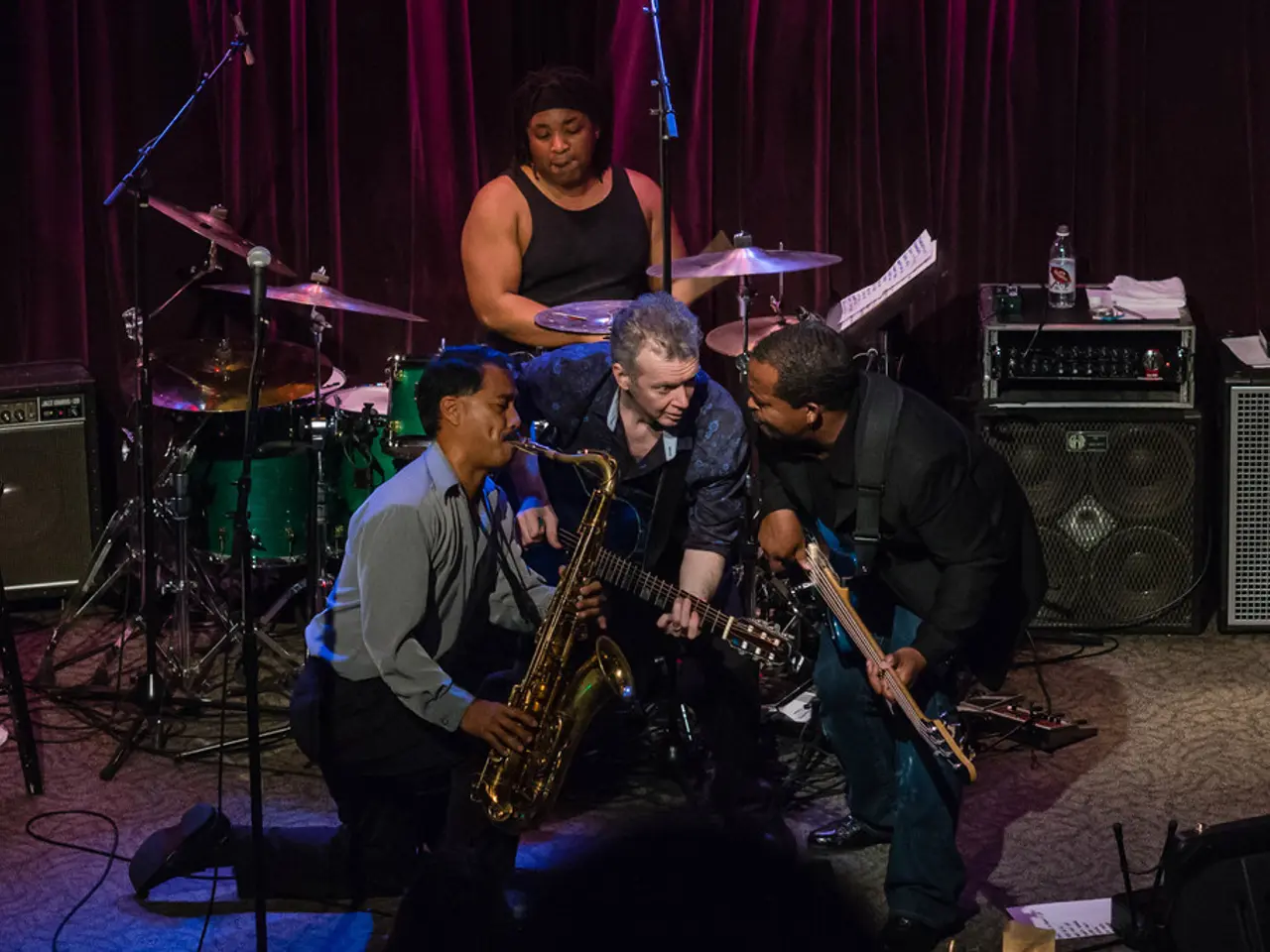Enhance Your Audio Blends with These Mixing Console Techniques
================================================================================
In the realm of live performances and audio production, understanding the fundamentals and employing advanced techniques can make all the difference. Here are some essential tips to help you create captivating and high-quality audio experiences.
Fundamentals for Live Sound
A balanced monitor mix is crucial for performers to hear themselves accurately. Proper mic placement and selecting the right microphones for each instrument or vocal are key in live sound. Positioning microphones away from walls and corners can improve audio quality, while installation of absorption panels on the walls at reflection points can enhance clarity.
For the front-of-house mix, focus on achieving a coherent sound that suits the venue. To achieve the best sound quality, initially focus on gain staging, speaker placement, and room acoustics.
Advanced Techniques in Audio Production
Some advanced techniques for using effects in audio production involve creatively combining, automating, and customizing common effects like reverb, delay, chorus, flanger, phaser, exciters, stereo width effects, compression, and gates to enhance the sound dynamically and spatially.
Key advanced techniques include Dynamic Automation, Layering Multiple Delays, Micro-Pitch Shifting for Width, Filtering Delays and Reverbs, Colored Compression, Parallel Processing, Creative Use of Gates, Complex Modulation Effects, Spatial Imaging, and more. These techniques require thoughtful mixing decisions to reduce reliance on extensive effect usage.
Maintaining a Well-Organized Setup
Cable management is important; tangled or damaged cables can significantly affect the quality of audio signals. Regularly inspect audio cables for signs of wear or damage, ensuring that connections are secure and free of fraying. A well-organized setup is vital for high-quality recording.
Using Digital Mixers and DAWs
Combining a Digital Audio Workstation (DAW) with a digital mixer offers real-time control over both recorded tracks and live inputs. Using plugins directly from a DAW on channels of a mixing desk enables the use of powerful digital effects and processing chains without leaving the mixing environment. Most digital mixers support integration with DAWs, allowing seamless transfer of audio and control data.
Caring for Your Equipment
Taking care of audio equipment involves regular maintenance and prompt troubleshooting to ensure optimal performance and longevity. Dust and dirt can accumulate in vents and ports, leading to potential overheating and malfunctions. Acoustic treatment is crucial for minimizing unwanted reflections and echoes in a studio.
Maintaining Consistency in Mixes
Using a reference track can help maintain consistency in mixes. When selecting a mixing desk, look for features such as EQ controls, built-in effects, and multiple channels. The ability to save presets is invaluable for recalling complex setups with ease.
Balancing the Live Performance
In capturing and mixing live sound, it's essential to create a balanced mix that caters to both performers on stage and the audience. Keeping the audience in mind, ensure clarity and the right sound balance, maximizing the impact of the live performance. Digital mixers feature touchscreen interfaces for intuitive adjustments.
Improving Studio Acoustics
Soundproofing your room can drastically improve audio quality. Bass traps in the corners can reduce low-frequency buildup. Setting up studio monitors to form an equilateral triangle with the listening position can help achieve accurate monitoring.
In sum, mastering live sound and audio production emphasizes automated parameter changes, layering, filtering to color effects, parallel processing, and spatial techniques to add depth, width, movement, and character to audio productions. By following these guidelines and techniques, you can create captivating and high-quality audio experiences for your listeners.
- In a home studio or professional recording environment, an audio interface can connect your guitar, microphones, and other instruments, facilitating the recording process.
- For achieving impressive results, carefully place the microphones for vocals and other instruments in the studio, as optimal positioning significantly impacts audio quality.
- When establishing a studio setup, focus on maintaining a well-organized and neat arrangement for better signal quality, as cable management plays an essential role in audio production.
- To generate a well-balanced live performance, mix your audio with various techniques, such as compression, gates, reverb, and delay, utilizing technology to enhance the music's overall impact.
- In the process of mixing and mastering your music, use a digital mixer to finesse and polish your tracks, exploiting its powerful features like equalizers, built-in effects, and multiple channels.
- Improve the acoustics of your studio or home recording space by employing strategies like soundproofing with bass traps, setting up studio monitors in an equilateral triangle, and strategically placing absorption panels.




